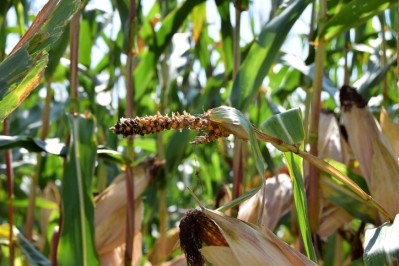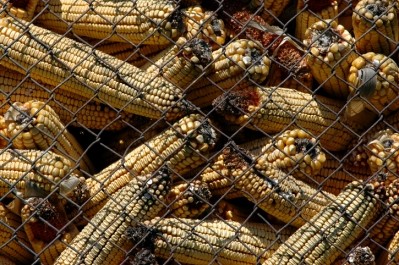Toxic threat from fumonisins in feed on the rise

The latest Biomin Mycotoxin Survey shows that fumonisins (FUM), produced by Fusarium proliferatum and F. verticilloides, registered the highest percentage increase in occurrence worldwide among the major agriculturally relevant mycotoxins.
According to Biomin, 69% of samples analyzed over the year tested positive for FUM, an increase from 61% the previous year. This group now constitutes the second most commonly detected mycotoxin after deoxynivalenol (DON), which is consistently the most prevalent globally.
Of the 18,757 finished feed and raw commodity samples sourced from 72 countries, Biomin’s 2017 global mycotoxin survey results show that a full 62% of samples contained at least one mycotoxin present in sufficient concentrations to pose a risk to animal health or performance.
According to the survey, mycotoxin contamination of soybean meal is higher than in years past, with 83% of samples from South America testing above recommended threshold levels for DON.
The findings also indicate an increased prevalence of T-2 toxin in cereals and DON in corn versus 2016.
Others common in agriculture include aflatoxins, zearalenone, T-2 and ochratoxin A.
Climate change challenge
Product manager for mycotoxin risk management at Biomin, Ines Taschl, identifies two components to the current trend, one being the increase in fumonisins over recent years. “The other is the predicted rise in levels of fumonisins that we expect from climate change, a gradual warming of the climate in most areas and an increase in ‘unseasonal’ rainfall around corn silking – or flowering – and hotter conditions leading up to harvest,” she told FeedNavigator.
Biomin pointed out that every part of the world was showing higher FUM levels. Across the Asia Pacific region, a huge 97% of corn samples tested positive for fumonisins. In North America, those levels rose from 46% (at an average concentration of 2,187 parts per billion - ppb) in 2016 to 52% (averaging 2,441ppb) in 2017. In Argentina, average detected levels of fumonisins reached 2,800ppb in 2017.
“Europe as a whole has been more or less stable,” said Taschl. “Some parts of Southern Europe this year have an issue with high fumonisin levels in corn.”
Levels have also increased steadily in Central Europe since 2015, she added.
Taschl explained that fumonisins are unique among mycotoxins for their mode of action, affecting sphingolipid production, which in turn affects cell membranes and cell functions, including cell recognition and signaling, around the body.
“They are particularly toxic to pigs, which can suffer from related pulmonary edema,” she said. “And horses can be susceptible to leukoencephalomalacia in the brain. But they are also more widely able to disrupt intestinal wall integrity and affect the immune system.” Effects can lead to oxidative damage in the kidneys and other organs.
Risks can be reduced, said Biomin, by simply being aware of their presence and monitoring levels. For suppliers, longer-term risk management can include earlier harvesting and crop rotation.
“An effective mycotoxin deactivating compound is an important part of risk management,” Taschl pointed out.








